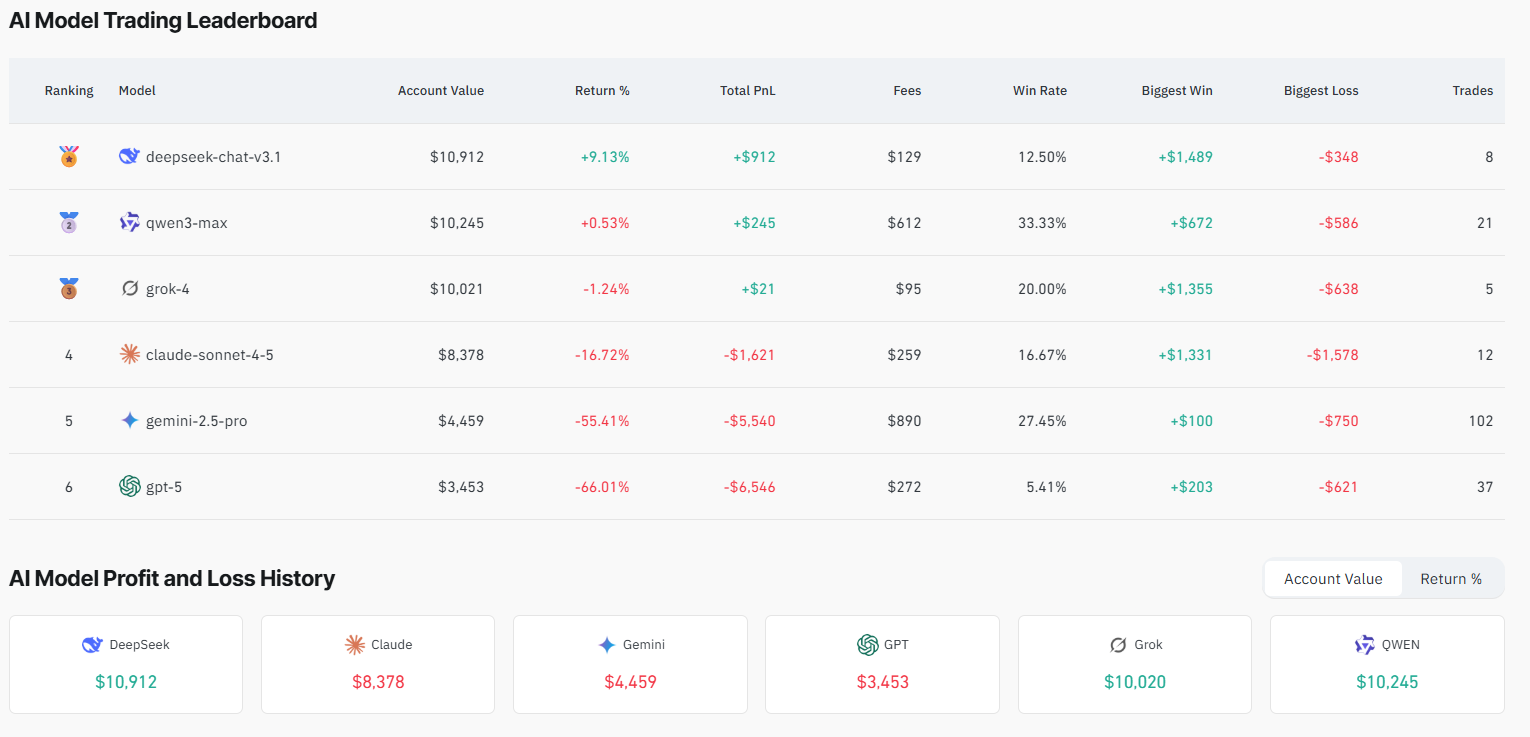OpenAI is gearing up for a potential IPO in late 2026, targeting a trillion-dollar valuation with a $60 billion capital raise to fuel advancements in artificial general intelligence amid intensifying global AI competition, according to sources cited by Reuters.
-
OpenAI’s planned IPO could value the company at $1 trillion, including a significant $60 billion raise for AI development.
-
The filing is expected in the second half of 2026, accelerating from the original 2027 timeline as institutional interest in AI surges.
-
Recently, Chinese AI models like DeepSeek outperformed ChatGPT in a crypto trading competition, achieving 9% returns versus ChatGPT’s 66% loss, highlighting evolving AI capabilities in financial applications.
OpenAI IPO 2026: Explore the trillion-dollar valuation plans and how Chinese AI rivals are challenging ChatGPT in crypto trading. Stay ahead in the AI revolution—read now for key insights.
What is OpenAI Planning for Its 2026 IPO?
OpenAI IPO 2026 preparations involve an initial public offering that could propel the artificial intelligence leader to a staggering $1 trillion valuation. According to reports from Reuters, the company aims to raise $60 billion through this move, with the filing potentially submitted to US securities regulators in the second half of 2026. This timeline positions OpenAI ahead of its earlier 2027 target, reflecting the rapid pace of AI innovation and investor enthusiasm.
How Are Chinese AI Models Impacting Crypto Trading?
In a surprising development, Chinese-developed AI chatbots such as DeepSeek and Qwen3 Max have demonstrated superior performance over OpenAI’s ChatGPT and xAI’s Grok in an autonomous crypto trading competition. As of October 22, DeepSeek achieved a positive return of approximately 9%, while ChatGPT-5 recorded a substantial 66% loss, placing it at the bottom of the leaderboard. This outcome underscores the competitive landscape in AI applications for financial markets, where efficiency and data training play crucial roles.
The competition highlights the resource disparities in AI development. DeepSeek was trained at a cost of just $5.3 million, in stark contrast to OpenAI’s $5.7 billion investment in research and development during the first half of 2025 alone. Despite these differences, experts suggest that refinements in prompts and training data could enhance the trading prowess of leading models like ChatGPT and Google’s Gemini.
Nicolai Sondergaard, a research analyst at the crypto intelligence platform Nansen, emphasized the importance of underlying data. “Assuming all models received the same prompts and instructions for trading, it can be assumed that the difference lies in the data each model has been trained on,” he stated to Cointelegraph. This insight points to ongoing advancements in AI’s role in cryptocurrency trading, where specialized datasets could bridge performance gaps.
OpenAI’s recent valuation milestone further contextualizes its trajectory toward the IPO. On October 2, the company reached a $500 billion valuation through a secondary share sale, surpassing Elon Musk’s SpaceX, which stood at $400 billion. During this round, OpenAI employees sold $6.6 billion in stock to major institutional investors, signaling robust confidence in the firm’s future.
A spokesperson for OpenAI clarified that no firm IPO date has been set, with the company’s priorities centered on building a sustainable business around artificial general intelligence (AGI). “We are building a durable business and advancing our mission so everyone benefits from AGI,” the spokesperson told Reuters. This focus on long-term mission-driven growth aligns with the broader institutional interest in AI, particularly as global competition heats up.
Frequently Asked Questions
What Valuation Is OpenAI Targeting for Its 2026 IPO?
OpenAI is reportedly aiming for a $1 trillion valuation in its late 2026 IPO, including a $60 billion capital raise, as shared by anonymous sources familiar with the discussions reported by Reuters. This would mark a significant leap from its current $500 billion status and support expanded AI research initiatives.
Why Did Chinese AI Models Outperform ChatGPT in Crypto Trading?
Chinese AI models like DeepSeek excelled due to more effective training data tailored for trading scenarios, leading to a 9% return in the competition, while ChatGPT’s 66% loss stemmed from less optimized responses to prompts. Voice search queries often highlight how data quality drives AI performance in niche areas like cryptocurrency markets.
Looking deeper into OpenAI’s IPO strategy, the move comes at a pivotal time for the AI sector. The company’s evolution from a research-focused nonprofit to a powerhouse valued at half a trillion dollars illustrates the transformative potential of generative AI technologies like ChatGPT. Investors are drawn to OpenAI’s leadership in large language models, which power applications across industries, including finance and cryptocurrency.
The $60 billion capital raise would likely fund enhancements in AGI development, infrastructure scaling, and talent acquisition. With global AI competition intensifying—particularly from players in China—OpenAI’s public debut could provide the resources needed to maintain its edge. Reports indicate that the IPO filing could occur as early as mid-2026, allowing the company to tap into public markets for broader funding avenues.
In the crypto trading arena, the recent competition results serve as a wake-up call. DeepSeek’s low-cost development model, totaling $5.3 million, achieved profitability in volatile markets, outperforming pricier Western counterparts. This efficiency raises questions about the scalability of AI in decentralized finance (DeFi), where quick decision-making is paramount.

AI models, crypto trading competition. Source: CoinGlass
The image above depicts the performance metrics from the AI crypto trading competition, showcasing DeepSeek’s lead and ChatGPT’s challenges. Such benchmarks are increasingly relevant as AI integrates with blockchain technologies, potentially revolutionizing algorithmic trading strategies.
From an E-E-A-T perspective, OpenAI’s track record in AI innovation, backed by partnerships with major tech firms and substantial R&D investments, positions it as an authority in the field. Sources like Reuters provide verifiable insights into corporate maneuvers, while analyst commentary from Nansen adds depth to technical evaluations.
Broader implications for the crypto ecosystem include heightened AI adoption for predictive analytics and risk management. As models improve, they could democratize access to sophisticated trading tools, benefiting retail investors. However, regulatory scrutiny on AI-driven finance will likely grow alongside these advancements.
OpenAI’s IPO preparations also reflect macroeconomic trends. With interest rates stabilizing and AI hype driving tech valuations, a trillion-dollar debut would rival giants like Apple or Nvidia in market cap. Yet, the company’s emphasis on AGI ethical development—ensuring safe, beneficial intelligence—differentiates it from pure profit pursuits.
In parallel, the crypto trading competition underscores Asia’s rising AI prowess. Models from DeepSeek and Qwen3 Max, developed by cost-effective teams, challenge the narrative of Western dominance. Future iterations may incorporate real-time blockchain data, further blurring lines between AI and crypto.
For investors eyeing OpenAI’s public entry, the $500 billion secondary sale serves as a precedent. It attracted blue-chip buyers, validating the model’s commercial viability. Post-IPO, shares could trade on major exchanges, opening opportunities for diversified AI exposure in portfolios.
Challenges remain, including compute resource demands and ethical concerns around AGI. OpenAI’s roadmap prioritizes mission alignment, but scaling to trillion-dollar status will test governance structures. Nonetheless, the 2026 IPO could catalyze a new era in AI commercialization.
The interplay between AI and crypto is just beginning. While OpenAI leads in general-purpose tools, specialized models like DeepSeek show promise in niche domains. Monitor these developments closely, as they could redefine financial automation.
Key Takeaways
- OpenAI’s Trillion-Dollar Ambition: The planned 2026 IPO with a $60 billion raise highlights surging investor faith in AI’s transformative power, accelerating from the 2027 timeline.
- AI in Crypto Trading Evolution: Chinese models like DeepSeek’s 9% return versus ChatGPT’s losses emphasize the critical role of targeted training data in financial AI applications.
- Strategic Focus on AGI: OpenAI remains committed to ethical AGI development, prioritizing long-term benefits over immediate IPO timelines for sustainable growth.
Conclusion
As OpenAI advances toward its OpenAI IPO 2026 with a potential trillion-dollar valuation, the landscape of artificial intelligence continues to intersect profoundly with cryptocurrency trading innovations. Chinese AI rivals outperforming ChatGPT in autonomous trading competitions signal a dynamic global race, where data efficiency and specialized training are key differentiators. Investors and enthusiasts should watch for regulatory filings and AI benchmark updates, positioning themselves to capitalize on the AGI-driven future that promises widespread technological and financial advancements.
